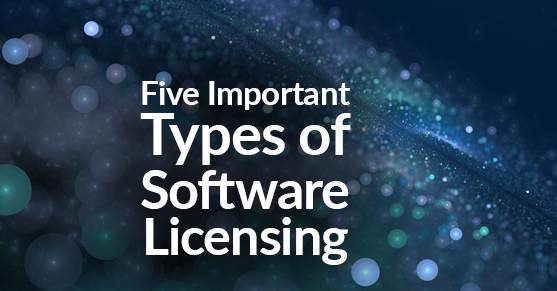We’ve discussed how the COVID-19 pandemic affected IT environments, particularly the effect it’s had on software licensing. Understanding the intricacies of your licenses is vital right now, and having an overarching knowledge of what they are can help you in the long run.
In this blog, we’d like to explore five of the most common types of software licenses and the types of software that usually employ them. Whether you’re struggling with your license management or you’re just trying to get a better understanding of the kinds of licenses, these explanations should remedy your concerns.
Copyleft (“Reciprocal” or “Restrictive”) License
Copyleft licenses allow users to modify the existing code and circulate their work based on the licensed code, so long as it’s dispensed under the license’s stipulations. The most common example of a Copyleft License would be any software using the General Public License (GPL), for example, MySQL, MariaDB, or Red Hat.
Many companies opt to offer their software under Copyleft Licensing because it promotes community involvement for the expansion of the software.
Lesser General Public License (LGPL)
Originally referred to as the “Library General Public License,” the LGPL is a licensing option that allows users to link the user’s original code with an LGPL library. The main attraction for these licenses is that the user can release applications they build under whichever license they choose.
When a user applies an LGPL to a library, they can modify it while remaining open source, but with the option of being used as a closed source. A few examples of software relying on LGPL licenses include Mnemosyne, Shotwell, and Nettle.
Permissive License
Permissive licensing is the most popular license for open-source software because there are few limitations around code modification, redistribution, etc. In mainstream IT, it’s often referred to as the “Apache Style” licensing or the BSD License or the MIT License. Again, permissive licensing is pretty straightforward with little restrictions.
Public Domain License
Public domain licenses are pretty liberal when it comes to modification and dissemination of code — as the name implies, pubic domain software (for example, SQLite and I2P) is free for anyone to use and alter code without regulation. For that reason, public domain software isn’t always the most secure environment for users; a prominent reason why it has little presence in modern business/enterprise software.
Proprietary License
Moving away from the less restrictive options leads us to the most restrictive type of software license, the proprietary license. This is the licensing solution for almost all closed source software because it’s an “all rights reserved” license that doesn’t allow for modification/distribution. From Microsoft and Oracle to Adobe and UNIX, most of us have engaged with proprietary software more than once.
Reaching Out to Software Licensing Pros
If we had to run through every single type of software licensing, we’d be here for a while. Open-source and commercial licenses are incredibly diverse, but the ones we’ve defined in this blog tend to come up more often than others. Hopefully, the information here offers some clarity around the software licenses your business is managing.
If you have a question or concern, feel free to engage with us via the comments below. If there’s a type of license that you’re looking for clarity around, don’t hesitate to reach out. While we do have our areas of expertise, experts at Software Licensing Pros are privy to all kinds of licensing, no matter the vendor or platform. Reach out today, and we’ll be glad to help!
This post was originally published here.

